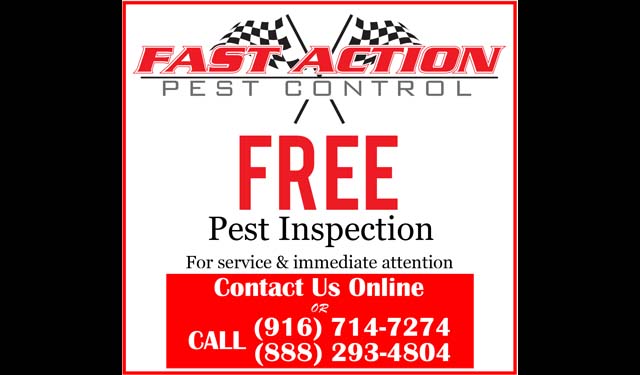The Complete Guide to WDO Inspections for Homes: Everything to Know
Keeping your home insect-free requires knowing what processes and professionals can help. This guide explains everything to know about WDO inspections for homes.


Wood-destroying organisms (WDOs) are any organisms that weaken or impact the structural integrity of wood.
While termites are some of the most common WDOs, they aren’t the only ones. This category also includes other insects, such as wood-boring beetles, as well as dry rot and wet rot. If you have a WDO problem in your home, it’s important to act quickly to mitigate current losses and protect against future damage.
WDO inspections for homes are thorough, professional, and necessary. Today, we’re diving into what they cover and how to schedule one for your property today.
A Quick Look at WDOs
Before we dive into the specific WDO inspection process, let’s briefly cover what a WDO is. Here in Northern California, the most common ones we see are:
- Drywood termites
- Subterranean termites
- Carpenter ants
- Dry rot and fungal damage
Combined, these invaders can cause major, expensive damage to your home. They love to invade the wooden parts of your property, often causing extensive issues before you find them.
The Legalities Behind WDO Inspections
Wood damage isn’t just unsightly to look at. It can also be dangerous. Compromised wood can pose a range of health and safety problems, which makes prompt inspection even more necessary.
For one, there’s the risk of personal injury. When wooden structures become compromised, someone could experience hazards such as:
- Falls through baseboards
- Impacts from collapsing beams
- Exposure to irrigation pipes and electrical components in walls
In addition, WDOs can also cause massive property damage, including:
- Water damage
- Collapsed ceilings
- Exposed, unsafe electrical systems
If you experience personal injury or property damage at the hands of WDOs, the location matters. If the incident occurs at your workplace, your employer could be required to compensate you for your losses if they failed to carry out a standard WDO inspection prior to the event.
Similarly, if you lease your home or apartment, your landlord or property owner could be the one held liable. California Civil Code 1941.1 states that when someone rents a home, the property is implied to be habitable. This means it meets all health and safety standards as set forth by the state.
If there are WDOs on the property, this violates that code. Property managers are usually the ones responsible for taking action, and if they fail to do so, you might be able to petition for a rent reduction in the meantime.
WDO Inspections for Homes: Step-by-Step Process
If you notice any signs of WDO damage, it’s important to take action immediately. If you rent your home, let your landlord know. This way, you can schedule a WDO inspection with a professional pest control company as soon as possible.
There are typically three main parts of the inspection. Let’s break them down.
Part 1: Finding Evidence of an Active Infestation
First, the pest control team will look for evidence that you’re dealing with an active WDO infestation. The signs they’ll look for will vary depending on the type of pest you’re dealing with. Here are some of the most common issues you may encounter.
Termites
- Floor damage
- Cracks in the walls and ceilings
- Misshapen door and window casings
- Mud tubes at the foundation
- Winged termites (swarmers) present in the home
- Termite droppings (frass) containing feces and wood fragments
Carpenter Ants
- Visible ants crawling near food
- Winged ants flying around home
- Piles of wood shavings
- Rustling noises
Sometimes, the pest control team will find an active WDO infestation on the property. Other times, they’ll find evidence that one exists (e.g. fungal damage) but will not find the actual organisms. In either case, most sales and rental agreements require the issue to be repaired.
Part 2: Determining If There Are Outstanding Issues
Some properties will not have an active WDO infestation going on, but they will exhibit conditions that make the space more likely to suffer an infestation in the future.
A pest control team can spot these problems and inform you of their dangers so you can quickly correct the issue. A prime example is a home where part of the wooden structure comes into direct contact with the earth. Or, you might have a plumbing leak in your bathroom.
Both issues can cause devastating fungal damage to the wood. The earth-to-soil contact softens the wood and makes it more hospitable to subterranean termites. Likewise, plumbing leaks can also catalyze fungal damage to your floors and walls.
Other household issues that could add moisture to your property and increase your risk of fungal damage or termites include:
- Cracked tiles
- Leaky gutters
- Missing grout
- Poor landscape grade that drains groundwater toward the property
Part 3: Removing Obstacles to Inspections
During initial WDO inspections, there may be obstacles that prevent pest control technicians from accessing and inspecting the property fully. When this happens, they cannot complete the inspection. This renders them unable to provide recommendations under Part 1 or Part 2 as described above.
This commonly occurs when homeowners have storage, tools, toys, or other objects stored along the exterior of the home. This prevents the team from taking a complete look at the state of the foundation and siding. Or, they might notice a dry water stain that they want to open up and take a closer look at to investigate.
When these problems arise, the team will recommend that the homeowner or landlord address them. Then, they will return to complete a follow-up inspection.
Schedule a WDO Inspection
It’s important to only trust a professional, experienced pest control company to conduct WDO inspections for homes.
As we covered, these problems can be costly and complicated, as well as litigious. You want to make sure you’ve covered all of your bases, taking a proactive approach to pest management to anticipate and correct problems before they occur. If you do notice an issue, call us immediately.
Our licensed, experienced pest control technicians can conduct an extensive WDO inspection to get to the root of the problem. This includes treating the issue in a safe and effective manner so you can reclaim your home and quality of life. Contact us today to learn more and schedule your service.

